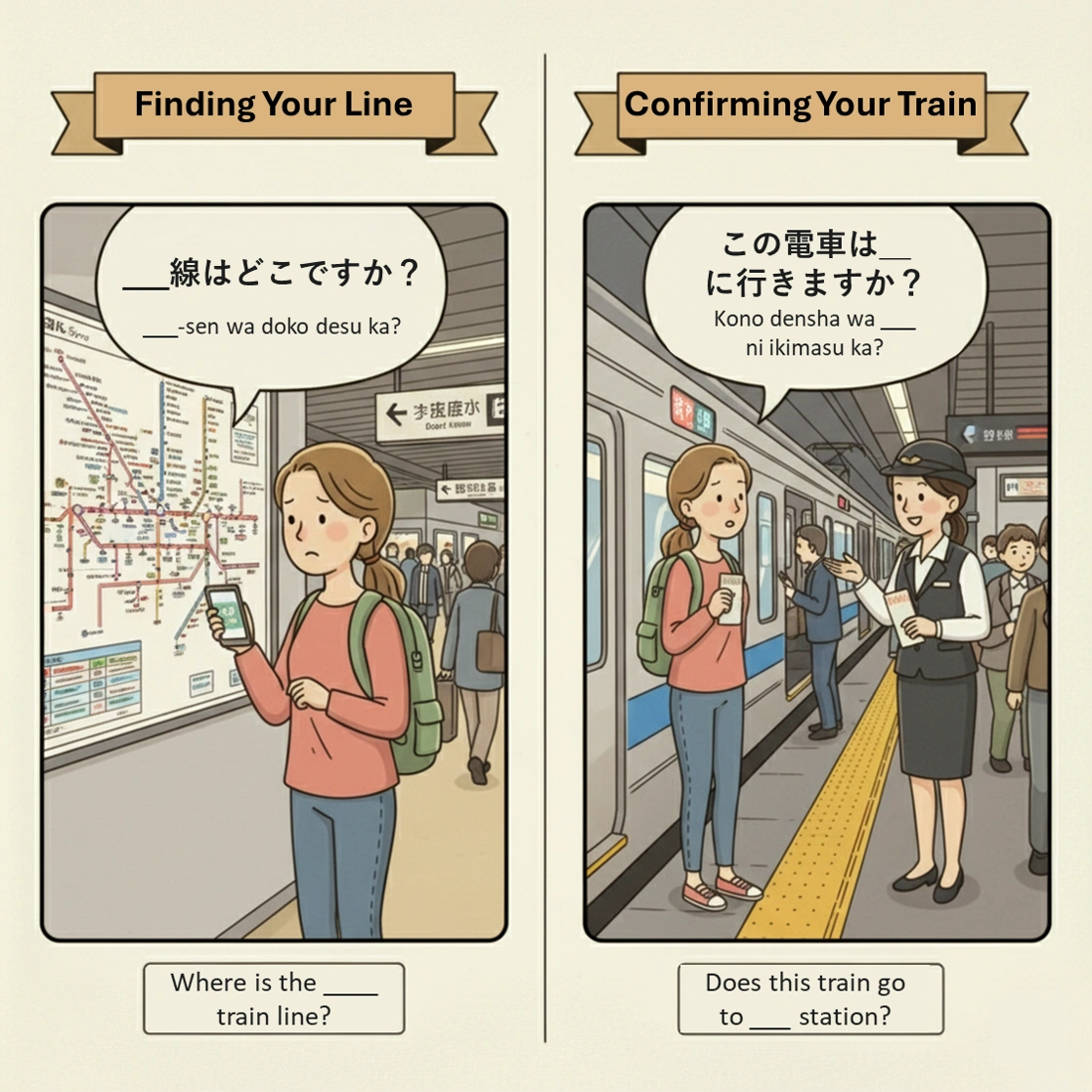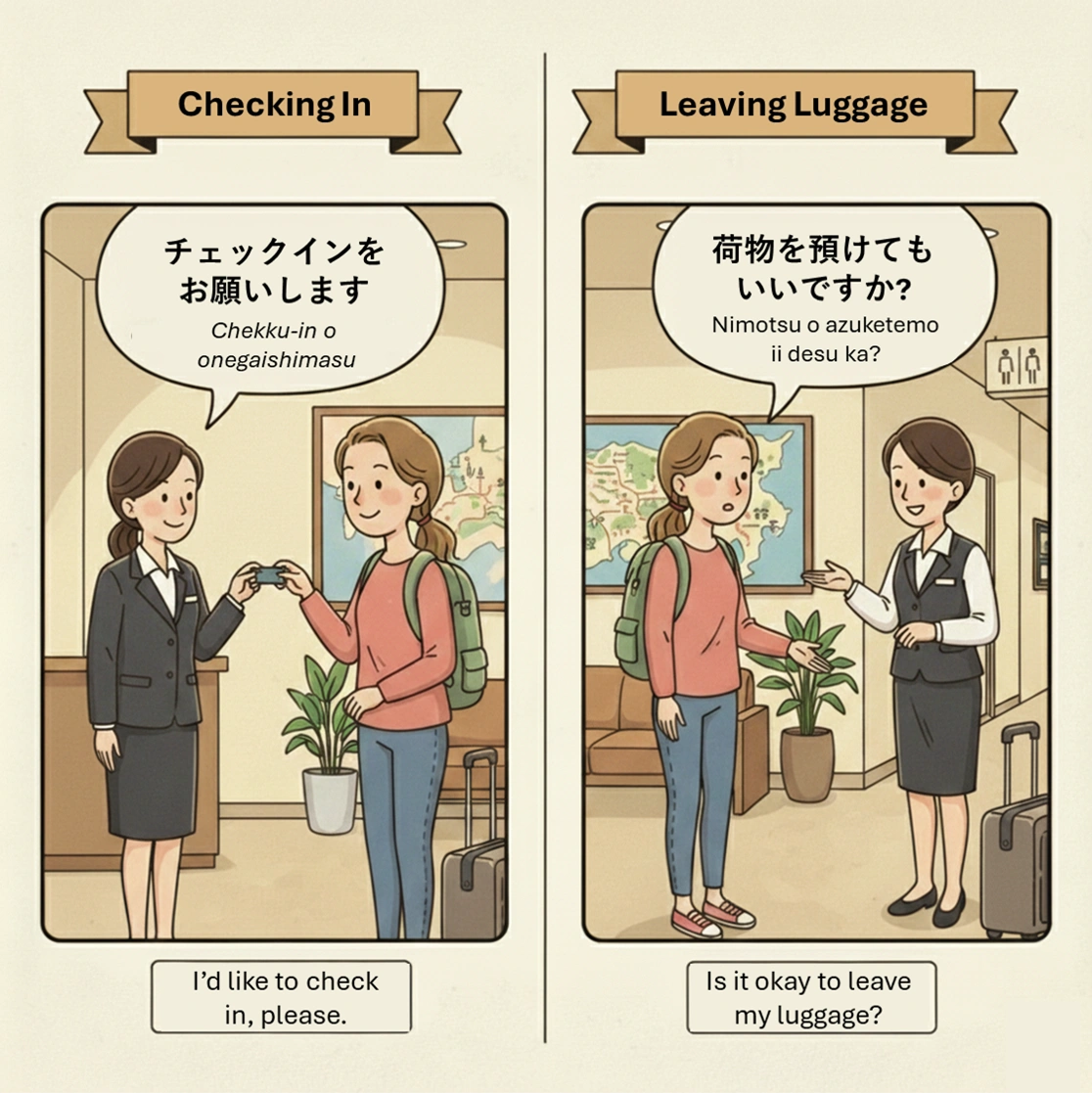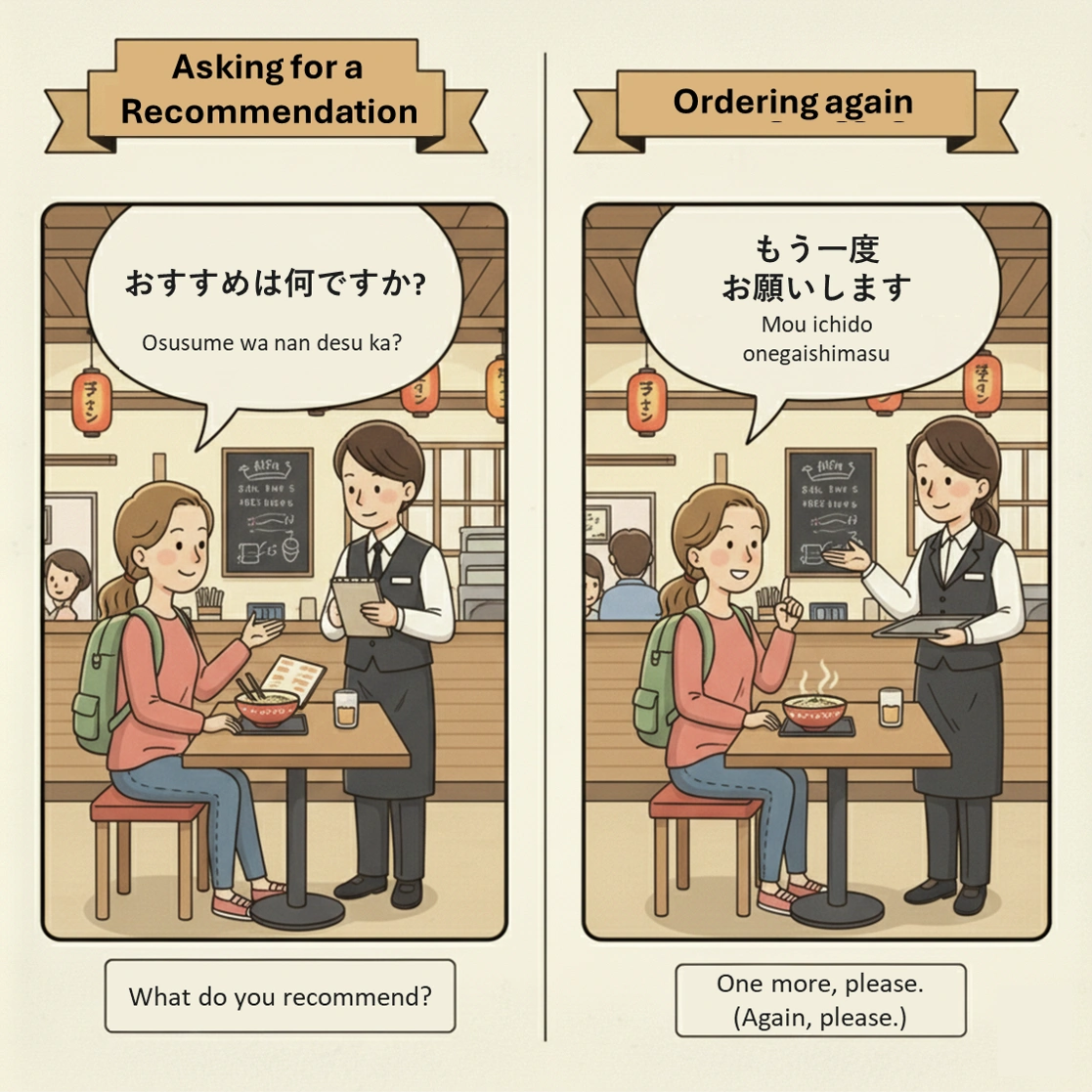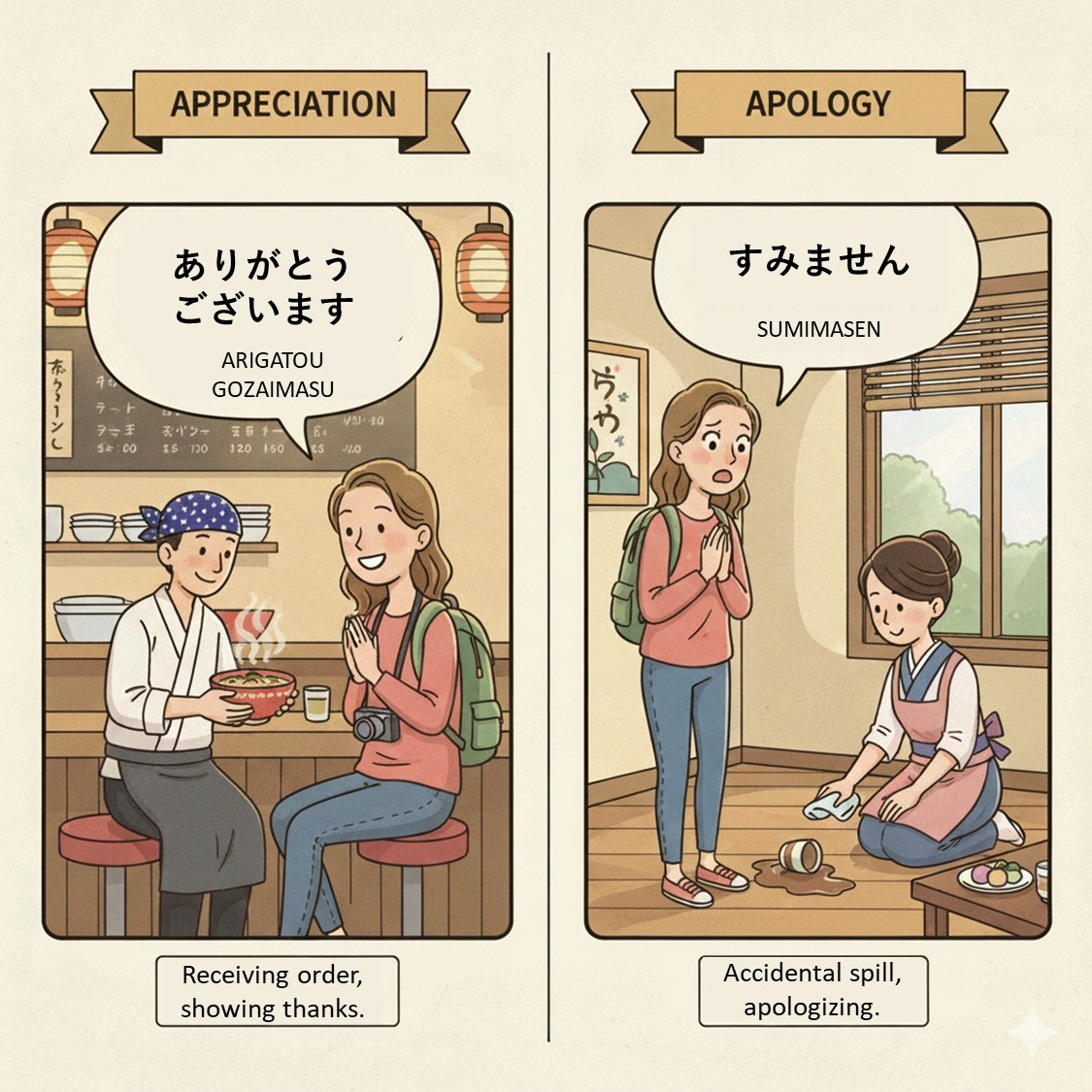25 Essential Japanese Transportation Phrases for Easy Travel
Published: November 12, 2025 | Reading Time: 10 minutes
Japan's public transportation system is a marvel of efficiency and punctuality. From the iconic Shinkansen (bullet train) to Tokyo's intricate subway map and local buses in Kyoto, getting around is a core part of any Japan trip. However, this complexity can be daunting. Stations like Shinjuku and Tokyo are massive labyrinths, and while major signs are in English, knowing key Japanese phrases is your best tool for avoiding stress, catching the right train, and handling unexpected situations like a pro.

On This Page
1. Why Transportation Phrases Matter 2. At the Station: Tickets & Fares 3. Finding Your Way: Platforms & Directions 4. On the Train & Bus: Confirming Stops 5. Etiquette & Common Situations 6. Getting Off & Exiting 7. Special: Shinkansen & Long-Distance 8. Explore More Essential Phrases 9. Frequently Asked Questions1. Why Transportation Phrases Matter
Your entire trip relies on getting from point A to point B. While you can get by with Google Maps and pointing, what happens when you're on a local bus with no English announcements? Or when you need to know if the train you're on is the *local* (which stops everywhere) or the *express* (which might skip your stop)? These phrases are your lifeline. They save you time, prevent you from getting lost, and help you interact politely with station staff and fellow passengers.
Japan's train system is a marvel of punctuality, but navigating it can be an adventure. A few key phrases turn confusion into confidence.
These phrases cover everything from buying tickets and IC cards (like Suica or Pasmo) to finding the right platform and making sure you're on the right train.
2. At the Station: Tickets & Fares
Before you can get on a train, you need a ticket or a charged IC card. While ticket machines have English options, ticket counters and charging kiosks can be faster with these phrases.
-
___までの切符をください___ made no kippu o kudasaiA ticket to ___, please
The most basic and useful phrase at a ticket counter. Just fill in your destination.
-
___までいくらですか?___ made ikura desu ka?How much is it to ___?
Useful at ticket machines when you're looking at the big fare map above.
-
大人二枚、子供一枚Otona nimai, kodomo ichimaiTwo adults, one child
Use "otona" (adult) and "kodomo" (child) with counters: ichi-mai (1), ni-mai (2), san-mai (3).
-
スイカにチャージしてくださいSuica ni chaaji shite kudasaiPlease charge my Suica
Works for any IC card (Pasmo, Icoca, etc.). You can say this at a machine or convenience store.
-
パスモを買いたいですPasumo o kaitaidesuI want to buy a Pasmo card
Use this to buy a new rechargeable IC card. You'll usually pay a 500 yen deposit.
3. Finding Your Way: Platforms & Directions
You have your ticket, but now you have to find the right train. In a station with 30+ platforms, this is where Japanese is essential. This is the most important set of phrases to learn.
-
___線はどこですか?___-sen wa doko desu ka?Where is the ___ Line?
Your go-to phrase. "Yamanote-sen" (Yamanote Line), "Chuo-sen" (Chuo Line), etc.
-
新宿行きのホームは何番ですか?Shinjuku-iki no hoomu wa namban desu ka?What platform number is for Shinjuku?
"___-iki" means "bound for ___". This confirms both the destination and platform number.
-
この電車は渋谷に行きますか?Kono densha wa Shibuya ni ikimasu ka?Does this train go to Shibuya?
The ultimate confirmation phrase. Ask someone on the platform before you get on.
-
これは急行ですか?Kore wa kyuukou desu ka?Is this an express train?
Crucial! An express (kyuukou) or rapid (kaisoku) train will skip many local stops.
-
次の普通は何時ですか?Tsugi no futsuu wa nanji desu ka?What time is the next local train?
"Futsuu" (local) or "Kakueki-teisha" (all-stops train) is what you want for smaller stations.
-
バス乗り場はどこですか?Basu noriba wa doko desu ka?Where is the bus stop?
"Basu noriba" (bus stop/terminal) is essential. Train stations often have huge bus terminals outside.
Transportation Tip: Know Your Train Types!
Not all trains on the same line are equal. Always check the train *type* before boarding.
• 普通 (Futsū) or 各駅 (Kakueki): Local. Stops at every station.
• 快速 (Kaisoku): Rapid. Skips some stations.
• 急行 (Kyūkō): Express. Skips even more stations.
• 特急 (Tokkyū): Limited Express. Only stops at major stations (often requires a separate fee).
4. On the Train & Bus: Confirming Stops
You're on board, but is it the right one? And when is your stop? These phrases help you confirm your journey mid-trip.
-
このバスは___に停まりますか?Kono basu wa ___ ni tomarimasu ka?Does this bus stop at ___?
Essential for buses, which can have confusing routes. Ask the driver before you pay.
-
次は___ですか?Tsugi wa ___ desu ka?Is the next stop ___?
A quick way to confirm your stop is approaching. Ask a passenger next to you.
-
___で降ります___ de orimasuI'm getting off at ___
You can say this to a bus driver to ensure they stop, or to people in your way.
-
すみません、降ります!Sumimasen, orimasu!Excuse me, I'm getting off!
On a crowded bus, you press the stop button. On a crowded train, this politely tells people to let you through.
5. Etiquette & Common Situations
Japanese trains and buses are often quiet and orderly. These phrases help you navigate crowded spaces politely and follow the rules.
-
すみませんSumimasenExcuse me / Sorry
The most useful word. Use it if you bump into someone, need to get past, or want to get someone's attention.
-
失礼しますShitsurei shimasuPardon me / Excuse me
A slightly more formal way to say "excuse me" when passing in front of someone who is seated.
-
ここ、空いていますか?Koko, aite imasu ka?Is this seat free?
Politely ask before sitting next to someone. If they say "douzo" (go ahead), the seat is free.
-
予約席ですか?Yoyaku-seki desu ka?Is this a reserved seat?
Useful on Shinkansen or Limited Express trains if you are in the non-reserved car but are unsure about a seat.
Understanding Train Etiquette
Understanding the "why" behind train manners is as important as the phrases. People avoid talking on the phone, keep conversations quiet, and line up neatly on the platform. Reading about these cultural norms helps you blend in and show respect. This is where real-world reading practice becomes invaluable.
YoMoo provides engaging articles on Japanese culture, travel, and daily life, helping you build reading skills while learning the unspoken rules of society—like why everyone is so quiet on the morning train.
6. Getting Off & Exiting
You've arrived at your station, but you're not done yet. Large stations have multiple exits, and you might need to transfer or adjust your fare.
-
出口はどこですか?Deguchi wa doko desu ka?Where is the exit?
"Deguchi" (exit) is a vital word to know. Look for the yellow signs.
-
___口はどっちですか?___-guchi wa docchi desu ka?Which way is the ___ Exit?
Exits are named: "Higashi-guchi" (East Exit), "Nishi-guchi" (West), "Minami-guchi" (South), "Kita-guchi" (North). Your map app will tell you which one to take.
-
精算機はどこですか?Seisan-ki wa doko desu ka?Where is the fare adjustment machine?
If your IC card is short on funds or your paper ticket doesn't cover the full fare, you must use a "seisan-ki" before the exit gates.
7. Special: Shinkansen & Long-Distance
Riding the Shinkansen (bullet train) is an experience in itself. It has its own platforms, ticket types, and rules, which are different from local trains.
What is a Shinkansen?
The Shinkansen (新幹線) is Japan's high-speed rail network, famous for its speed, safety, and punctuality. You need special tickets to ride it, and platforms are usually separate from local lines. Key train types are Nozomi (fastest, not covered by standard JR Pass), Hikari (semi-fast), and Kodama (local).
-
指定席 / 自由席Shitei-seki / Jiyuu-sekiReserved seat / Non-reserved seat
The two main ticket types. "Jiyuu-seki" cars are usually 1-3. "Shitei-seki" guarantees you a specific seat.
-
これはのぞみですか?Kore wa Nozomi desu ka?Is this the Nozomi?
Crucial for Japan Rail Pass holders, as the standard pass does not cover the Nozomi or Mizuho trains.
-
ジャパンレールパスで乗れますか?Japan Reeru Pasu de noremasu ka?Can I ride this with the Japan Rail Pass?
The easiest way to ask a staff member if your pass is valid for the train you're about to board.
Basic Shinkansen Etiquette
- Luggage: Store large suitcases in the designated oversized luggage areas (now requires reservation on some lines) or behind the last row of seats.
- Food & Drink: Eating and drinking (including bento and beer) is perfectly fine and part of the experience.
- Phone Calls: Do not take phone calls in the seating area. Go to the vestibule area between cars.
- Reclining: It's polite to ask the person behind you ("Suimasen, taoshite mo ii desu ka?") before reclining your seat.
8. Explore the "Essential Phrases" Series
Mastering everyday situations is key to a smooth trip. Continue building your confidence with our other guides in this series:




9. Frequently Asked Questions
What's the best way to pay? Cash, card, or IC card?
What happens if I lose my train ticket?
What's the difference between local, express, and rapid trains?
• Rapid (快速, Kaisoku): Skips some smaller stations.
• Express (急行, Kyūkō): Skips even more stations, stopping only at major hubs.
• Limited Express (特急, Tokkyū): Stops only at the biggest stations and almost always requires an extra "express fee" ticket in addition to your base fare ticket.
Always check that the train type stops at your destination!
What is a Japan Rail Pass and should I get one?
Are trains and buses always on time?
What should I do if I get on the wrong train?
Final Thoughts
Navigating Japan's world-class transportation system is a key part of the adventure. While it may seem complex, the system is designed to be user-friendly, and staff are incredibly helpful. Arming yourself with these 25 phrases gives you the confidence to ask for help, confirm your route, and handle any small issues that come up. From the all-purpose "Sumimasen" (Excuse me) to the essential "___ wa doko desu ka?" (Where is ___?), these expressions will make your journey smooth and stress-free.